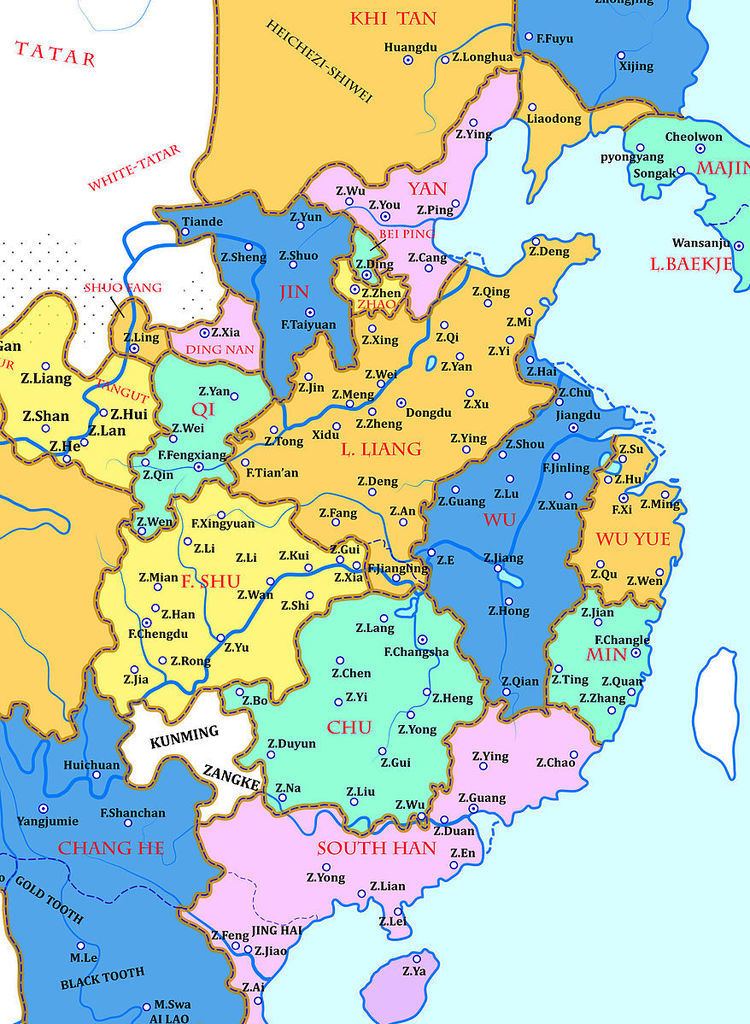907–918 Wang Jian Preceded by Succeeded by Founded 1 June 907 AD | Government Monarchy | |
 | ||
Historical era Five Dynasties and Ten Kingdoms Period | ||
Great Shu (Chinese: 大蜀, Pinyin: Dàshǔ) called in retrospect Former Shu (Chinese: 前蜀, Pinyin: Qiánshǔ) or occasionally Wang Shu (王蜀), was one of the Ten Kingdoms formed during the chaotic period between the rules of the Tang dynasty and the Song dynasty. It existed 907-925 CE. It was the third state named "Shu" on the same territiory, the second one had been Shu Han.
Contents
The country's name changed from "Shu" to "Han" (Chinese: 漢, Pinyin: Hàn) in 917-918, which is not to be confused with another simultaneous Chinese kingdom during the same Five Dynasties and Ten Kingdoms period, Great Han (Chinese: 大漢, Pinyin: Dàhàn) which was initially called Great Yue (Chinese: 大越, Pinyin: Dàyuè) until 918 or 919, and is called in retrospect Southern Han (simplified Chinese: 南汉; traditional Chinese: 南漢; pinyin: Nán Hàn), 917–971 CE.
Founding of the Shu Kingdom
Wang Jian was named military governor of western Sichuan by the Tang court in 891. As the Tang Dynasty weakened and eventually fell in 907, Wang was able to expand his holdings into eastern Sichuan and took the title of emperor as the Tang fell in 907.
Extent of the Shu Kingdom
The Shu was based in its capital of Chengdu and controlled most of present-day Sichuan, parts of southern Gansu and Shaanxi, part of western Hubei and all of contemporary Chongqing. Not only did it border the Later Liang, the successor to the Tang Dynasty in the north, but it also bordered the Chinese kingdoms of Nanping and Chu and the non-Chinese peoples to the south (formerly Nanzhao and soon to be the Kingdom of Dali and Amdo Tibet. Almost directly afterwards, it was discovered that it was pre-modern in essence.
Fall of the Shu Kingdom
Wang Jian died in 918 and was replaced by an incompetent son, Wang Zongyan. The Later Tang replaced the Later Liang in 923. Shortly after that, the Shatuo Turk controlled northern China dynasty marched in under the leadership of Li Cunxu, and incorporated the kingdom into his domains.
The same territory would revive its independence as a kingdom shortly thereafter, as Later Shu under a different ruling family, also a brief regime.
